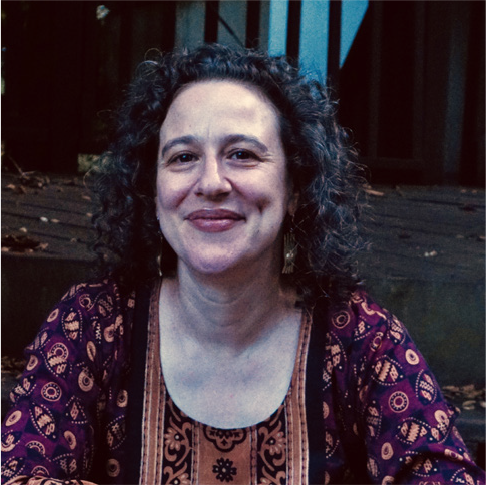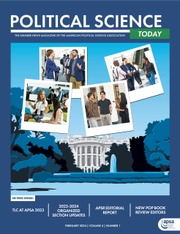When I became Director of Graduate Studies at UCONN-Storrs in summer 2014, I partnered with my colleague Shareen Hertel, who wisely counseled that we bring representatives of foundation and fellowship programs to our students. Impressed with the Social Science Research Council predoctoral fellowship opportunities, we invited representatives to visit our campus—and several of our graduate students applied. Their application required that they list what resources our department offered, beyond each student’s dissertation committee, to support their dissertation writing and completion. I realized that we had no such items. I quickly instituted a prospectus-writing and then prospectus- and dissertation-writing course that followed, almost to the letter, the equivalent class in the Anthropology Department at the University of Chicago.
The first time we offered the prospectus writing course, 13 students enrolled. Some had just finished their PhD exams while others had been “writing” for several semesters. The assignments, which were always short and focused on clearly conceptualizing their projects, produced a range of responses. For students who had seen everything prior to their prospectus and dissertation as merely preparatory, they were finally doing what had brought them to study for the PhD! Others, who loved research but were less clear about their precise direction, found this work welcome but challenging: in a broad universe of possibilities, what justified selecting this research question over all of the potential others? For a small set of students, while most assignments allowed for two paragraphs at most, they were excruciating. They had completed their course work and their graduate assistantships—in some cases with great success—but these assignments made it patently clear that this was not the kind of work they actually wanted to do.

Four weeks into the semester, when the work of two students had dropped off completely, I received requests for meetings. One of the students explained that she had fallen in love with universities as an undergraduate and that a PhD was a way to stay in them. Still, this mode of conducting research was not right for her. Worried that this now full realization might disappoint faculty she was still hoping would take her seriously, she had volunteered to run our graduate student association. She later explained that she had organized its very strong speaker series and programming around career preparation since she was trying to develop the kind of resume that would facilitate her moving out of the tenure-seeking/academic track and into adjacent work. She confided that she did this quietly, surreptitiously even, as she did not want to close any doors before a new set had begun to open. She also did not want to vindicate parents who had always been skeptical of the “hippy liberalism” of higher education.
At her urging, the second student also came to meet with me, asking if he could close the door. In hushed tones he admitted that he had known he wanted to leave the PhD program for a while. He felt embarrassed and even ashamed to be leaving a program that had invested in him. He had had to figure out how to exit on his own but didn’t want other students to face the same isolation. He asked that I share his name and contact information with other questioning students.
It wasn’t enough for me to tell these two students (and presumably the many who preceded and would follow them) that their choices were not only acceptable but welcome. All of our students needed to know that becoming a professor was one of many possible, legitimate avenues. As faculty, we spent so much time worrying about whether we were advising and mentoring our students for a changing professorial terrain. For some, all of the other options represented failure. But their numbers were shrinking. Not only was the work of tenured faculty changing, often in undesirable ways, but there was no contesting that numbers of tenure-track jobs are declining. Even as we continue to place PhD students well (“well above our rank,” as one of my colleagues says), the leadership of our graduate school frequently repeats that only 40% of PhD students, including from “aspirant institutions,” land such positions. What of the other 60%? It is not only that they should not be afterthoughts. They should also be encouraged proactively and positively to consider the full range of paid occupations that could match their commitments, interests, skills, and needs.
We first began to make concrete moves to realize this argument through a professional development course designed for our master’s students. Concerned that an MA in political science, for which most students paid, would not increase their job chances beyond those already opened by the BA, colleagues urged that we build career planning into their requirements. Sympathetic with this push, I created such a course in partnership with Kay Kimball Gruder of UCONN’s Center for Career Development. Punctuating the three-credit course by introducing students to vocabularies for articulating their strengths and interests, National Association of Colleges and Employers (NACE) competencies, job outlook data, resume versus CV writing, interviewing, and networking, we also chose eleven alumni of our program.
Among the alumni/ae we engaged were: one who works as a legislative analyst for the Connecticut General Assembly; a survey statistician/researcher for the US Census Bureau; the Political Research Director for Socioanalitica Research; the Editor-in-Chief of a bimonthly magazine published in Pakistan and Afghanistan; the Chief Risk Officer of the Bureau of Consumer Financial Protection; a high school social studies teacher; the Executive Director of Everyday Democracy; and the CEO of CTFoodshare. Each guest assigned readings tied to their respective professional work. In class, they spoke candidly about their career trajectories, how to make oneself competitive for these occupations, and what about them they find both fulfilling and frustrating. I had realized almost immediately that I could not speak with expertise or inside-knowledge of work beyond the professoriate. We needed our alumni to serve as resources and as guides. Doing so also created a regular and formalized way to celebrate their work and include it in the profile of outcomes that our training had generated or facilitated.
Several MA students in the course applied for opportunities and positions that they encountered through our guests. Many used the resumes they drafted and revised, the LinkedIn profiles they created, and informational interviews they conducted to secure work. Several reworked their final projects into applications to subsequent programs. Many emphasized how much they appreciated structured opportunities to speak with a range of adults about serious future choices while having a classroom community in which they engaged in sustained reflection about the contemporary nature of paid work in a larger, fulfilling life.
Kay and I took our work beyond the formal classroom, offering sessions through the Center for Career Development, the Graduate School, and UCONN writ large about how to foster conversations with students, from the very beginning, about their full range of career options. This included adjusting and updating our language so that everything beyond a tenure-track job isn’t framed as “non-academic.” Most recently, we are critically responding to questions about how to revise PhD benchmarks so that they integrate the multiple possible routes of students.
Many of our MA and PhD students still dream of becoming tenure-track professors. They love researching and writing, mentoring and teaching students. They just worry whether they will be among the few to secure a tenure-track position. And, if they do, they wonder whether it will be in a part of the country or world where they could imagine living with their families. For others, even the most ideal version of this track is not ideal for them. They love reading and writing but not according to the timelines and metrics of others. And they love teaching, but not in environments where teaching is treated as secondary in value. The possibility of cobbling together multiple separate positions, none with job security or sufficient support or pay, is enough to turn them elsewhere. For others still, the impact they seek is not that of the professoriate. They would rather write with shorter deadlines for less specialized, larger audiences. Or they want their research to be requested by associations actively making policy; then they can see the immediate usefulness of their labor. They also might not want to work in an environment that centers adolescents beginning adulthood in a culture that is increasingly litigious and anti-intellectual.
There are countries in the world where the expectation has always been that only a fraction of PhDs will remain in universities. The majority run museums or regulatory or granting agencies, bringing their formative experience of study into a broader terrain of cultural-institutional life. If we stand by the value of our advanced graduate training, this result can only bode well, even as we continue to insist that we are decimating US universities by replacing potentially permanent academic positions with those that are designed to be precarious and disposable.
Professors will not become overnight experts on the full range of occupations they have not chosen. We are fortunate not to need to; those experts are among some of our most accomplished graduates who are eager to maintain meaningful relationships with their alma mater. Valuing their work is not only overdue and necessary: doing so helps to create an environment in which students don’t need to whisper shamefacedly about trying to figure out the worlds of work in which they might thrive. But valuing in the form of speaking invitations and website spotlights is not sufficient.
The next steps are rethinking PhD benchmarks so that we move beyond solely preparing our graduates to be competitive applicants for tenure-track jobs. This might seem an unfair demand—we are just catching up to the elevated expectations of the shifting academic job market! Yet we need to be in a position to defend the value of what we offer by articulating how it would be expressed in a variety of lines of work. Moving backward from there, we then need to work out what would function as preparatory for these opportunities. This will indubitably require seeking out and leaning on the expertise of others as we often already do when inviting publishers or representatives of foundations and fellowships to speak with junior faculty. In this sense, making our offerings and preparation more current is part of a larger shift toward democratizing not only what we offer in the academy but also how we understand expertise and knowledge themselves. ■


